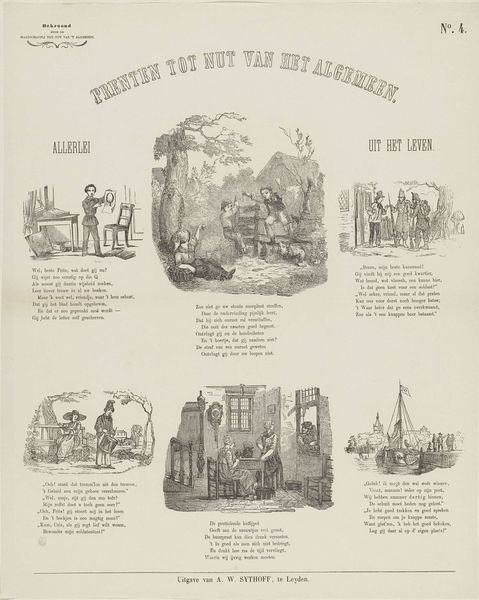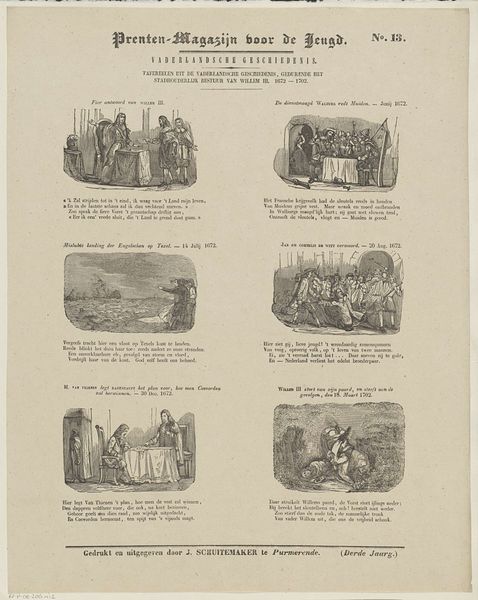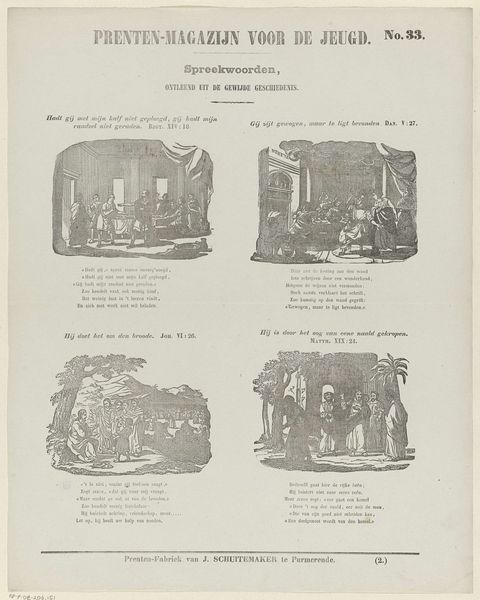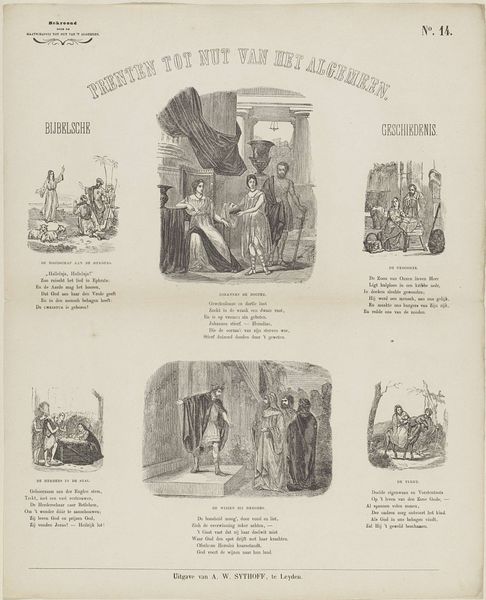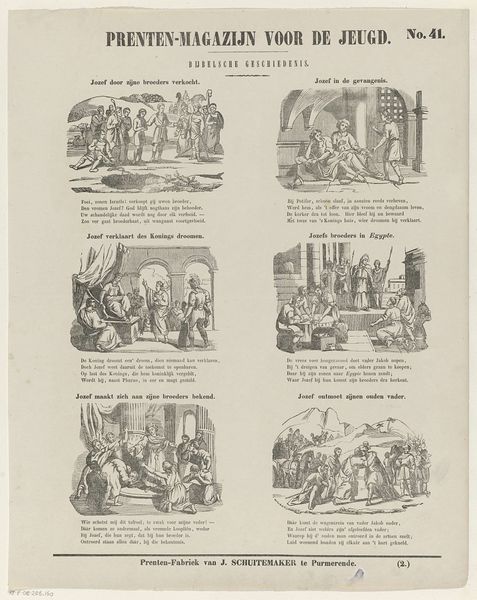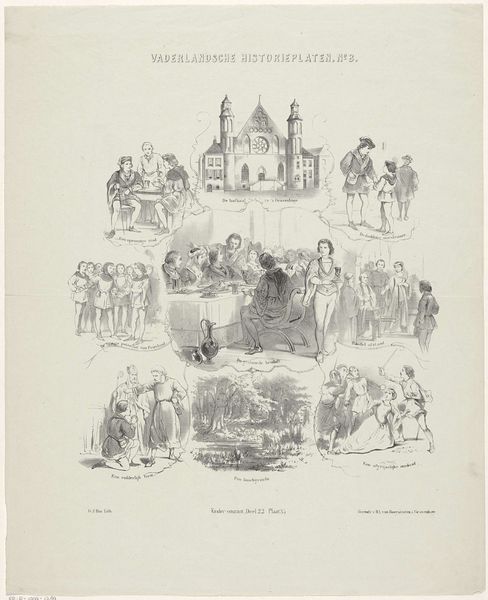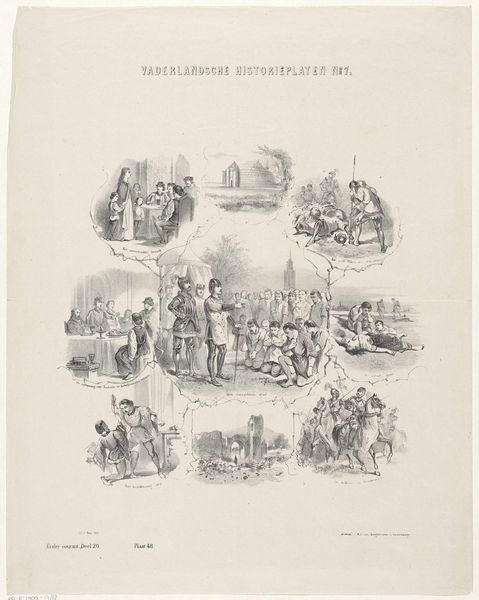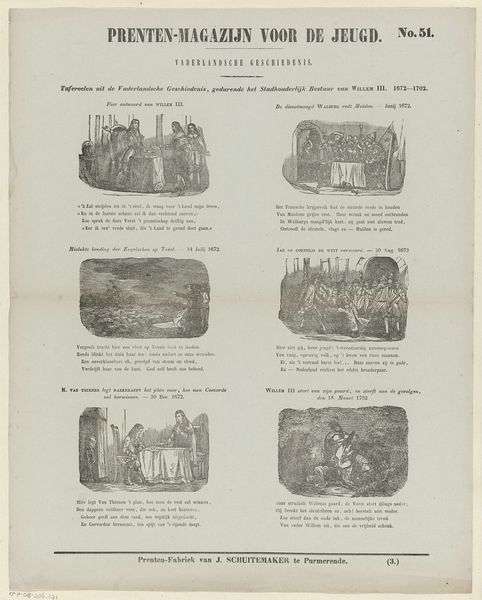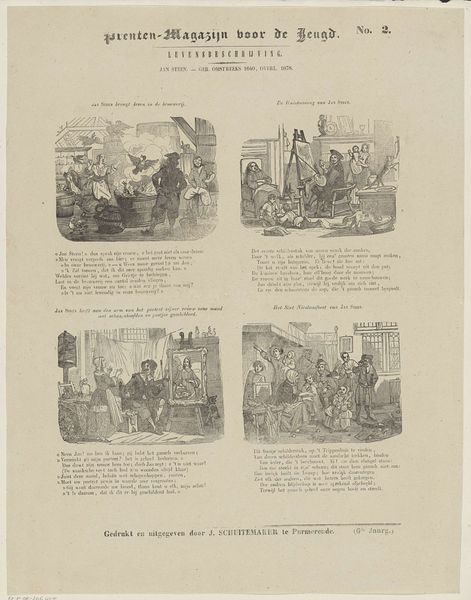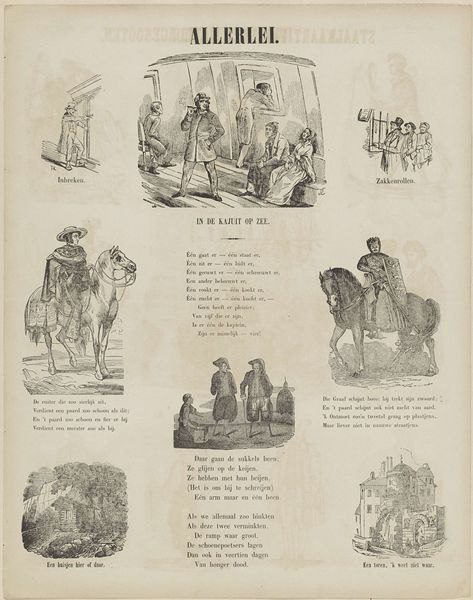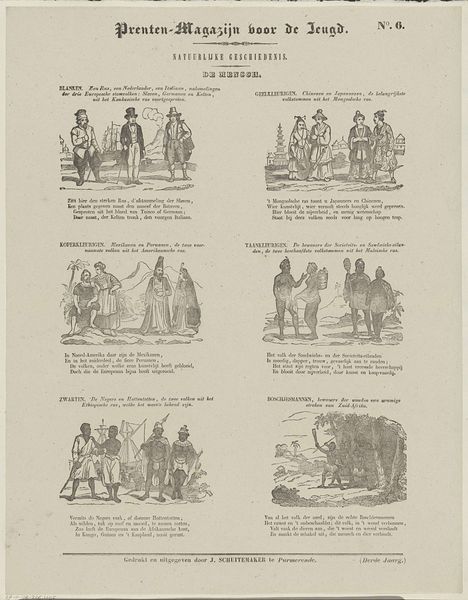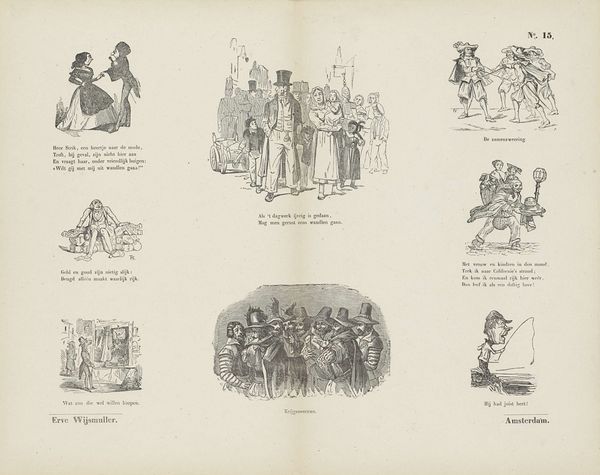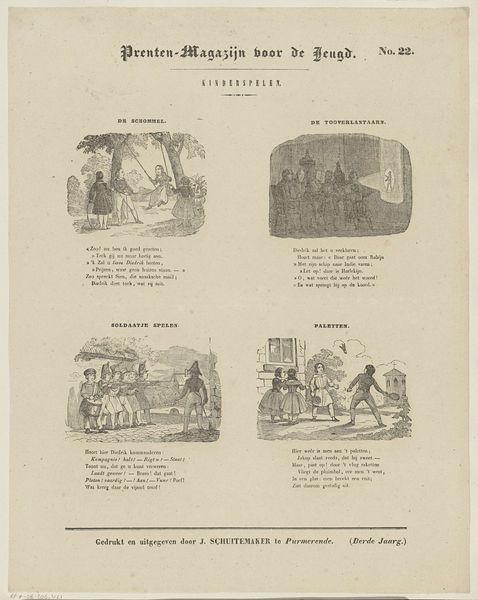
print, engraving
#
narrative-art
# print
#
old engraving style
#
history-painting
#
academic-art
#
engraving
Dimensions: height 423 mm, width 339 mm
Copyright: Rijks Museum: Open Domain
Curator: This engraving, titled "Vaderlandsche Geschiedenis" or "National History," dating from 1861 to 1929 and attributed to Albertus Willem Sijthoff, it has a distinctive old engraving style. It strikes me as quite dense with its multiple scenes. How do you interpret this work through a materialist lens? Editor: Well, given its title, I imagine the different vignettes represent important moments in Dutch history. As a print, readily reproducible, it was likely intended for wide distribution. Is it meant to convey a particular view on Dutch history? Curator: Exactly! Consider the production process. Engravings like these were often commissioned to shape public opinion and foster a sense of national identity. The choice of engraving as a medium—cheap, easily duplicated—meant these stories, these *representations* of history, could reach a broad audience, influencing their understanding of Dutch heritage. What implications does this have? Editor: So, instead of focusing on, say, the artistic merit of the lines and shading, you are drawn to the *purpose* of mass-producing and distributing it, to indoctrinate an idealized vision of history and nationhood in the Dutch people? Curator: Precisely. And the material tells us more: the paper, the ink, the very act of printing these scenes – all contributed to a specific narrative about Dutch identity being constructed, marketed, and consumed. It raises questions of labour too: Who made these engravings? Who profited from their sale? What was their role in this construction of national identity? Editor: I hadn't thought about it that way. So the work isn’t simply *depicting* history but is *actively participating* in shaping how people understood their nation and their place in it? Curator: Precisely! And recognizing this opens up new avenues for understanding the artwork, the culture that produced it, and the socio-economic forces that enabled its creation. Editor: That's a really interesting perspective. It's made me think a lot more about the role of material culture in shaping national identity and, furthermore, that a deeper political and sociological reading of the artpiece and context of creation must be done rather than an isolated experience of the piece. Curator: Indeed. Looking at the materials and means of production provides us valuable insight to critically evaluate the artist's motivations and wider societal impact.
Comments
No comments
Be the first to comment and join the conversation on the ultimate creative platform.
